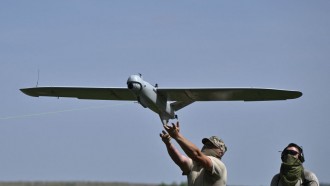Every April of each year, the Lyrids meteor shower throws in a few fireballs in the sky and skywatchers can watch this spectacular show starting April 16.
The annual Lyrid meteor shower is the oldest known meteor shower ever recorded. It was first observed in 687 BC or some 2,700 years ago.
This year, Lyrids shooting stars will be visible until April 25.
Oldest Known Meteor Shower
The Lyrid meteors are said to be leftover debris from the comet G1 Thatcher that was spotted in the New York night sky on April 5, 1861, by astronomer A.E Thatcher. In 1867, German astronomer Gottfried Galle proved the connection between Thatcher and the Lyrids meteors.
Annually, Earth is passing through the particles of the Lyrids near the constellation Lyra from April 14 to 30. When looking at the sky, the emerging point of the Lyrids lies near Vega, one of the brightest stars during this time of the year. Vega can be easily spotted even in light-polluted areas.
Lyrids is also known for its fast and bright meteors. When it peaks, Lyrids can streak 18 meteors per hour, but the number of fireballs can reach up to 100. The train of light from the meteors can be observed for a few seconds after it passes.
"The number of meteors can vary, and very rarely 'storm,' but on a very dark and moonless night there are usually up to 20 good meteors an hour," NASA advised.
Historically, Lyrids's heavier showers or outbursts were recorded in 1803 in Virginia, 1922 in Greece, 1945 in Japan, and 1982 in the U.S. Outbursts of Lyrids have occurred in intervals of 60 years. The next expected heavy shower will be observed around 2042.
When And How To Watch Lyrids
This year, the closest distance of the Earth to the Lyrids's particles and the Thatcher's orbit will be on the night of April 21 or 22. The Lyrids meteor shower will peak on the said dates and is expected to churn out 15 to 20 meteors per hour.
The Lyrids is most visible to skywatchers in the northern hemisphere. Those who are located in the mid-southern latitudes can also view the showers between midnight and dawn.
Weather permitting, the best time to view the shooting stars is after nightfall and before dawn. It would be best to wait until the moon has set.
Astronomers say that to be able to view the Lyrids, skywatchers should try looking up toward the east.
"Find an area well away from city or street lights. Come prepared with a sleeping bag, blanket or lawn chair. Lie flat on your back with your feet facing east and look up, taking in as much of the sky as possible. After about 30 minutes in the dark, your eyes will adapt and you will begin to see meteors," NASA said.





